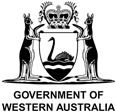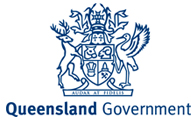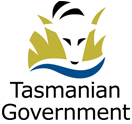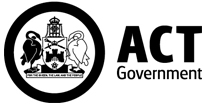Deriving guideline values using laboratory-effects data
Laboratory effects data from single-toxicant and single-species toxicity tests underpin most of the information used to derive toxicant water quality guideline values for Australia and New Zealand.
In the past, laboratory-effects approaches were not commonly used to derive guideline values for chemical and physical stressors but now they are being used more often for certain stressors (e.g. salinity, nutrients and dissolved oxygen).
Laboratory toxicity testing can take numerous forms, including:
- assessing single toxicants or mixtures of toxicants, including the assessment of waste waters or ambient waters
- standardised testing or site-specific testing
- single-species or multi-species testing (microcosms).
Overcoming limitations of laboratory toxicity testing
Most laboratory experiments comprise relatively simple bench-scale toxicity testing using single species of aquatic biota (e.g. algae, invertebrates, fish), which are often used to assess the toxicity of single toxicants.
In the natural environment, a toxicant will most often be present in combination with other toxicants, and interactions may occur to alter their toxicity.
But advantages of single-toxicant toxicity testing include:
- excellent assessment of cause and effect
- considerably easier implementation than multi-toxicant testing or field-based assessment
- more controllable test conditions (e.g. solution chemistry, temperature) to match site-specific conditions or a standard test water composition.
This is why single-toxicant toxicity tests have been the cornerstone for generating data for toxicant guideline values.
Mixtures of toxicants or other stressors can result in either additive toxicity, greater-than-additive toxicity (synergism) or less-than-additive toxicity (antagonism).
In most cases, mixture toxicity is, at most, additive. A review of the literature by Cedergreen (2014) indicated that synergism occurs in a minority of cases for anti-foulants, pesticides and metals, with overall proportions of 26, 7 and 3%, respectively.
Single-toxicant toxicity tests do not account for such factors, and extrapolation of the results to environmental impacts in real-world situations with toxicant mixtures carries significant uncertainty.
Information on mixture toxicity is better obtained from either direct toxicity assessments (DTAs) using single-species toxicity testing, or mesocosm or field studies for the specific toxicant mixtures of concern.
The toxicant default guideline values (DGVs) in the Water Quality Guidelines are primarily based on literature data, most of which are derived from standardised tests with commonly used test species in generic laboratory waters.
Site-specific guideline values can be derived using species, endpoints and conditions more reflective of a specific site or area, provided the methods meet acceptable quality standards. You may also derive site-specific guideline values from:
- reference-site data
- field-effects data
- multiple lines of evidence based on two or more of laboratory, field-effects and/or reference-site data.
Physical and chemical stressors
Guideline values for physical and chemical (PC) stressors are rarely derived using laboratory data, with an historical preference for using a referential approach.
In principle, the use of laboratory-effects data should be applicable at least for some stressors and would typically be no different from the approaches used for toxicants.
Since the ANZECC & ARMCANZ (2000) guidelines, laboratory data have sometime been used to derive PC stressor guideline values, for example:
- salinity guideline value based on toxicity data (Kefford et al. 2003; Dunlop et al. 2015)
- dissolved oxygen guideline value based on fish toxicity data (Butler & Burrows 2007).
These guideline values are based on biological effects and not on the 80th percentile of natural reference site concentrations.
See also:
Toxicants
Guideline values based on laboratory toxicity testing can be derived for toxicants in both water and sediment.
Water quality guideline values
Guidance on the approved method for deriving water quality guideline values for toxicants is available in the Method for deriving Australian and New Zealand water quality guideline values for protecting aquatic ecosystems from toxicants – update of 2018 version by Warne et al. (2025).
Note that Warne et al. (2025) represents an update of the toxicant guideline value derivation method previously published by Warne et al. (2018). Both Warne et al. (2018) and its companion document Batley et al. (2018) have been superseded by Warne et al. (2025).
Use this document to apply the method, including:
- definitions of acute and chronic toxicity and associated classification of toxicity tests
- advice on short vs long-term toxicity
- consideration of ecological relevance of toxicity data, including geographical relevance and use of non-traditional endpoints (e.g. behavioural) only if ecological relevance can be unequivocally demonstrated
- hierarchy of acceptable toxicity estimates
- comprehensive assessment of the quality of the toxicity data
- ability to combine chronic and acute (converted to chronic) data or freshwater and marine data
- comprehensive assessment of the modality of the toxicity dataset
- use of species sensitivity distribution (SSD) model averaging in the software package (shiny)ssdtools for deriving guideline values.
- reliability classification for guideline values based on type of toxicity data, sample size and visual estimation of goodness of fit
- increased flexibility through the use of transparent best professional judgement
The Warne et al. (2025) derivation method for developing DGVs for toxicants may also be used to derive site-specific guideline values for toxicants and physical and chemical (PC) stressors as appropriate. You should consult with your relevant jurisdiction to determine its views and requirements.
To derive guideline values for toxicants, we recommend the statistical distribution method, which uses an SSD of chronic toxicity data from at least 6 test species — but preferably more than 8, and ideally more than 15 — covering at least 4 taxonomic groups (Batley et al. 2018, Warne et al. 2025).
Guideline value derivation analysis is done using (shiny)ssdtools software. (shiny)ssdtools uses model averaging to generate the best fitting SSD to the toxicity dataset.
(shiny)ssdtools can be used to calculate guideline values for 4 different levels of protection:
- 99% species protection for high conservation or ecological value systems
- 95% species protection for slightly to moderately disturbed systems
- 90% species protection for highly disturbed systems
- 80% species protection for highly disturbed systems.
Guideline values for 80 and 90% species protection are designed more as indicators of concentrations representative of degraded systems where the objective should be continuous improvement.
In most cases, the 95% species protection guideline value will be applicable (e.g. for slightly to moderately disturbed systems). Some jurisdictions may require a higher level of protection for certain slightly to moderately disturbed systems..
If the management goal is no change in biodiversity (e.g. for high ecological value systems), or the toxicant in question is bioaccumulative, then the higher species protection goal (99%) would apply.
See guidance on Level of protection, and consult with your local jurisdiction, to help ensure the appropriate guideline value is used.
Applying assessment factors to the most sensitive toxicity value is the least favoured approach, and has unknown (typically low) reliability. This method is only used when there are insufficient data available to use the SSD method.
Sediment quality guideline values
Deriving sediment quality guideline values using laboratory-effects data is problematic due to the limited number of test organisms and the need to consider sediment grain size and dissolved organic carbon content as modifiers of contaminant bioavailability.
The Simpson et al. (2013) revision of sediment quality guideline values updated a number of the guideline values and introduced a weight-of-evidence process to sediment quality assessment. Refer to Simpson & Batley (2016) and Indicators in detail for information on assessment protocols.
You can undertake whole sediment toxicity testing on more than 8 benthic organisms and use an SSD of the toxicity data to derive sediment quality guideline values and to take into account the effects of grain size and organic carbon content. This has been undertaken for copper (Simpson et al. 2013).
The sediment quality guideline values for metals introduced in the ANZECC & ARMCANZ (2000) guidelines are largely derived from the effects-association database used by Long et al. (1995): effects range low (ER-L) and effects range median (ER-M) values.
For organics, the threshold effects level (TEL) and probable effects level (PEL) values of MacDonald et al. (2000) were adopted as being more reliable. This approach is largely based on a ranking of toxicant concentrations from a sediment-effects dataset with the guideline value being the 10th percentile value among sediments associated with field effects and/or measured whole sediment toxicity. It is quite different from the use of single-substance dose–response toxicity data to derive the DGVs for water quality, discussed previously.
Simpson et al. (2013) made revisions to a number of sediment quality guideline values based on improved effects data and guideline derivation approaches.
References
ANZECC & ARMCANZ 2000, Australian and New Zealand Guidelines for Fresh and Marine Water Quality, Australian and New Zealand Environment and Conservation Council and Agriculture and Resource Management Council of Australia and New Zealand, Canberra.
Batley, GE, van Dam, RA, Warne, MStJ, Chapman, JC, Fox, DR, Hickey CW & Stauber, JL, 2018, Technical Rationale for Changes to the Method for Deriving Australian and New Zealand Water Quality Guideline Values for Toxicants, CSIRO Land and Water Report, Lucas Heights.
Butler, B & Burrows, DW, 2007, Dissolved Oxygen Guidelines for Freshwater Habitats of Northern Australia (PDF, 51 pp, 1.1 MB), ACTFR Report 07/32, Australian Centre for Tropical Freshwater Research, James Cook University, Townsville.
Cedergreen, N, 2014, Quantifying Synergy: A Systematic Review of Mixture Toxicity Studies within Environmental Toxicology, PLOS ONE 9, e96580.
Dunlop, JE, Mann, RM, Hobbs, J, Smith, WE, Nanjappa, V, Vardy, S & Vink, S, 2015, Assessing the Toxicity of Saline Waters: The Importance of Accommodating Surface Water Ionic Composition at the River Basin Scale, Australasian Bulletin of Ecotoxicology & Environmental Chemistry 2: 1–15.
Kefford, BJ, Papas, PJ & Nugugoda, D, 2003, Relative Salinity Tolerance of Macroinvertebrates from the Barwon River, Victoria, Marine and Freshwater Research 54: 755–765.
Long, ER, MacDonald, DD, Smith, SL & Calder, FD, 1995, Incidence of Adverse Effects within Ranges of Chemical Concentrations in Marine and Estuarine Sediments, Environmental Management 19: 81–97.
MacDonald, DD, Ingersoll, CG & Berger, TA, 2000, Development and Evaluation of Consensus‐Based Sediment Quality Guidelines for Freshwater Ecosystems, Archives of Environmental Contamination and Toxicolology 39: 20–31.
Simpson, SL, Batley, GE & Chariton, AA, 2013, Revision of the ANZECC/ARMCANZ Sediment Quality Guidelines, CSIRO Land and Water Science Report 8/07, Canberra.
Simpson, SL & Batley, GE (Eds), 2016, Sediment Quality Assessment; A Practical Guide, Second Edition, CSIRO Publishing, Clayton South.
Warne, MStJ, Batley, GE, van Dam, RA, Chapman, JC, Fox, DR, Hickey, CW & Stauber, JL, 2018, Revised Method for Deriving Australian and New Zealand Water Quality Guideline Values for Toxicants — updated of 2015 version. Prepared for the revision of the Australian and New Zealand Guidelines for Fresh and Marine Water Quality. Australian and New Zealand Governments and Australian state and territory governments, Canberra, 48 pp.









